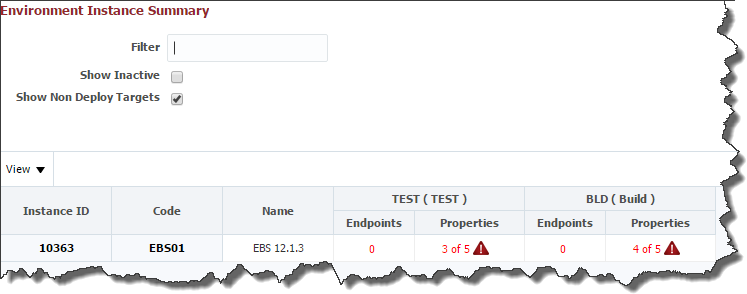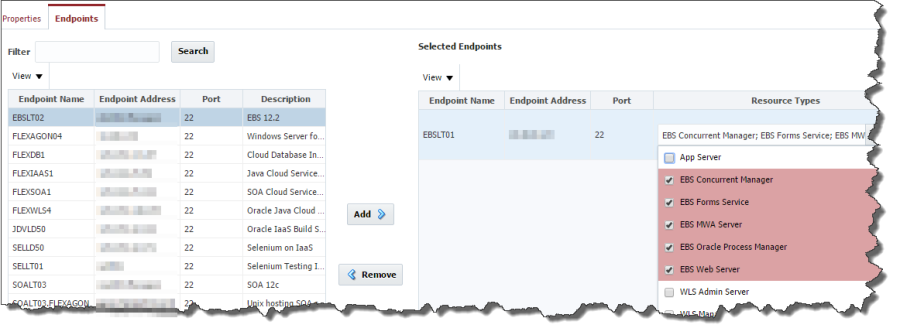An Environment Instance, as its name suggests, is simply an association between one environment and one instance. The Environment Instances were created automatically when we associated the instance to environments. The association can then be used to assign endpoints and provide values for any properties mapped to those environment instances (through workflows or plugin operations).
In this guide we created an EBS instance and associated it to the Build and Test environments.
To view the Environment Instances which have been established select Topology -> Environment Instances from the menu.
Notice that the EBS instance we created is represented as a row, and that the two environments we created are represented as columns. Where an instance and an environment intersect is known as an environment instance. There are two cells within this intersection – the number of configured endpoints, and the number of configured properties.
Locate the Endpoints in the intersection of the EBS instance and the Build environment. Click on the number in that column to associate endpoints to that environment instance.
Select the endpoint which you configured in an earlier step (on the left), and click the Add button to shuttle it to the selected endpoints (on the right). In the Resource Types dropdown, select the components of EBS which run on this server.
Click the Save button to save the changes, and then click the Properties tab to allow entry of properties required for this environment instance. Enter the 3 required properties for EBS, as described below:
Property Name | Description |
|---|---|
FDEBS_SOURCE_SCRIPT | Oracle E-Business Suite includes a consolidated environment file called APPS< CONTEXT_NAME>.env, which sets up the environment for both Oracle E-Business Suite and the Oracle technology stack. You will need to enter the full path on this EBS server. If you have custom environment source script, you can use that instead. |
FDEBS_DB_USER | The privileged user to connect to EBS with (e.g. apps). |
FDEBS_DB_PASSWORD | The password for FDEBS_DB_USER. |


